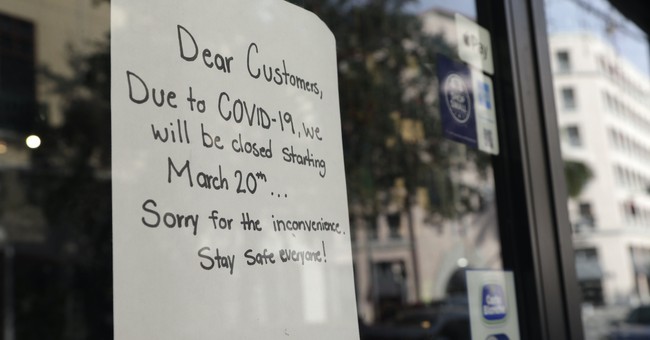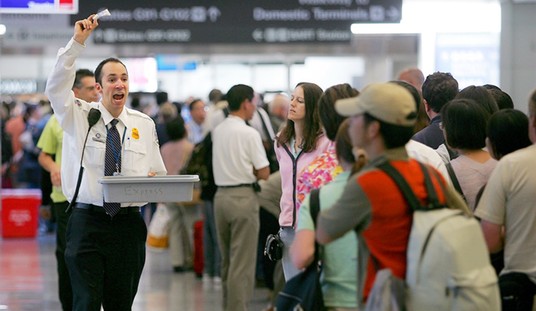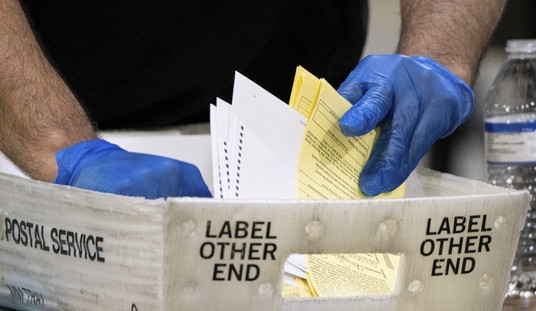
If the “Guidelines for Opening Up America Again” the White House released mid-April have encouraged anyone that maybe COVID-19 will not permanently send our economy back to the 1930s, they also remind us that the United States is caught in a game of chicken with financial ruin. As in every game of chicken, the vital question is “When should I swerve?”
Importantly, the guidelines do not win the game: they expand the players. They entrust governors and other state and local officials with the most crucial decision facing our country: “When should we start reopening our economy?” Although the guidelines indicate that states or regions should “satisfy” certain gating criteria “before proceeding to Phase One,” they defer to non-federal officials:
State and local officials may need to tailor the application of these criteria to local circumstances (e.g., metropolitan areas that have suffered severe COVID outbreaks, rural and suburban areas where outbreaks have not occurred or have been mild). Additionally, where appropriate, Governors should work on a regional basis to satisfy these criteria and to progress through the phases outlined below.
Such deference is refreshing in this era of leviathan government, and it is fitting, given our Constitution’s federalist system, not to mention the geographic variance in COVID-19 prevalence.
Still, if we move too slowly, the draconian restrictions the federal and states governments have implemented will kill not only the economy but also people. I don’t mean merely that COVID-19 will claim more victims if we open up too soon. I mean the government’s restrictions will literally kill people if we reopen too late.
Mission Accomplished?
Before Trump or state and local officials can answer the “When,” “How,” and “Who” of reopening America’s economy, we need to remember “Why” we closed it (or at least why officials said they did; exclude for now officials who wielded or grew their powers on pretext and had ulterior motives, and thus a different “why”). The government shut down the economy to “flatten the curve” of the COVID-19 outbreak. The theory goes that by prohibiting gatherings, by socially distancing, and by undergoing quarantine (a.k.a. “shelter at home”), we could avoid a sudden spike of COVID-19 cases that would overwhelm our healthcare system. In other words, that we could avoid Italy’s fate, including its high death toll.
When these measures were proposed, it was acknowledged that these restrictions might not reduce the total number of COVID-19 cases—but that by spacing them out over time, we would avoid exceeding our “healthcare system capacity” and therefore save lives. This is illustrated by the myriad famous graphs spawned by the Centers for Disease Control and Prevention.
The hardest-hit regions seem to be proving this true. New York and Detroit are reporting stabilization, and even reduction, in the number of new cases of Coronavirus. States such as California, Oregon, and Washington are beginning to return ventilators that are no longer needed. Meanwhile, tens of thousands of newly manufactured ventilators that have been ordered have yet to be shipped. This suggests we are cresting the infection graph well within the limits of what our healthcare system can handle. If staying within the capacity of our healthcare system really was the predicate for the “shelter at home” orders, then it appears we have succeeded. If so, the restrictions must go. But how?
Moving Goalposts
A likely flaw in the new guidelines is that they move on from the “Flatten the Curve” goalpost. In fact, the guidelines establish three new goalposts: a 14-day decrease of cases in a given region. This goalpost must be achieved before starting Phase One—and achieved again before advancing from Phase One to Phase Two, and again before advancing from Phase Two to Phase Three.
The problem is that this will be right at the time that new antibody tests are coming on-line and being made widely available. Thus, because more testing will invariably identify more cases, it will screw up the case data with a wave of newly detected cases that are not necessarily truly new cases. A better approach would be to base Phase One on the number of hospitalized COVID-19 patients, as this is likely more reliable over time and reflective of the true incidence in a population. If that is going down consistently over two weeks, the true incidence is also likely going down, regardless of what the “reported” number of cases is doing.
But suppose the new goalposts stand. Then what?
One justifiable fear is that if the restrictions are suddenly withdrawn in full, people may get together to “celebrate” in large numbers and risk a second spike of cases. So, a staged withdrawal such as President Trump has proposed is prudent.
There are common aspects to all phases of the President’s proposed re-opening plan. These include good hygiene practices, sick people staying home, and workplaces taking measures to facilitate social hygiene and temperature checks. In all phases, “vulnerable” individuals are defined as the elderly, people with “serious underlying health conditions,” and people with immune systems that have been compromised in the course of medical treatment.
Phase One
The White House guidelines propose that all vulnerable individuals should continue to shelter in place during this phase. Telework should continue for those occupations able to accommodate remote work. Gatherings where social distancing is not possible should be limited to 10 people. Larger gatherings are allowed to resume as long as social distancing measures can be undertaken. This could include dining, sporting events, and church services.
These are sound recommendations—but they could be improved by making further allowances for individuals who are presumably immune. This would include those who have already recovered from COVID-19 or tested positive for the IgG antibody for COVID-19, in the absence of IgM. These people are likely at little to no risk of re-contracting the infection. Further isolation of them would thus be pointless. They should be allowed to resume work and other activities during this phase.
Phase Two
The Phase Two guidelines take a giant step toward normalcy. Although the White House recommends vulnerable individuals remain sheltered during Phase Two, it also recommends expanding gatherings to 50 people where social distancing is not practical. During this phase the resumption of non-essential travel and elective surgeries can be resumed.
Although this phase fairly successfully walks the tight rope between caution and “reopening America,” the resumption of “elective” surgical procedures should belong to Phase One. One of the great untold tragedies of the current “shelter at home” period has been the near impossibility of obtaining urgently needed but not yet emergent procedures. These include colonoscopies for slower gastrointestinal bleeding, as well as changing batteries in deep brain stimulators for Parkinson patients.
Physicians and patients should be the ones to determine which surgeries are considered essential—and this determination may vary by individual. Moreover, the physicians, surgeons, and administrators at individual hospitals and private practices are more than capable of determining whether such surgeries are advisable at any point in time.
Adrenaline Boost
Phase Three will be the moment of truth, when vulnerable populations exit the shelter period and leave the home for the first time in months. Due to the flattening of the curve, these people should be confident that adequate healthcare resources exist should they become ill.
But are the guidelines for Opening Up America Again too little too late? That depends entirely on how deftly state and local officials adapt them to their populations.
To sum up, the three improvements these officials should make to the guidelines are:
- Replace the 14-day decrease in COVID-19 cases metric with a 14-day decrease in COVID-19 hospitalizations. New tests coming on-line will cause the number of known cases to spike, but not the number of existing The latter is what matters.
- Let presumably immune individuals resume normal activity in Phase One.
- Let doctors and patients determine which surgeries they wish to undergo, “elective” or otherwise, in Phase One.
These improvements would add an adrenaline boost to the generally prudent guidelines for Opening Up America Again.
Restrictions the Silent Killer
Such a boost cannot come to soon, and it’s up to state and municipal officials to allow it.
Health officials fear restarting the economy too early—but we should equally fear restarting each of the phases in the White House guidelines too late. Being late won’t just devastate our economy. The restrictions themselves will literally kill people—we just won’t ever know how many. Those who die from COVID-19 will have their death certificates marked accordingly. But those that die from suicide, a blood clot, or other consequence of the shelter at home orders will never be counted as having died from the government intervention.
New York Governor Andrew Cuomo has said the draconian restrictions on our lives and commerce will be worth it if it saves “just one life.” By that same logic, it will not be worth it if the government restrictions cost even one life.
Premature long-term mandated closures, such as those enacted by Virginia Governor Ralph Northam and proposed by Michigan Governor Gretchen Whitmer, are irresponsible manifestations of panic governance. They do not take into account the substantial drop in quality of life their orders will likely cause. For example, statistically, were all 330 million Americans quarantined for 4 months, this would equate to 1.4 million 78-year lifetimes squandered in quarantine.
Because we are on the brink of achieving the stated purpose for the economic shutdown—to flatten the curve of the COVID-19—we should start relaxing restrictions as soon as possible. Enacting a staged resumption sooner than later will save our economy, countless human lives, and immeasurable quality of life.
Chad Savage, M.D. ([email protected]), is a policy fellow at Docs 4 Patient Care Foundation and the founder of the DPC practice YourChoice Direct Care in Brighton, Michigan.













Join the conversation as a VIP Member